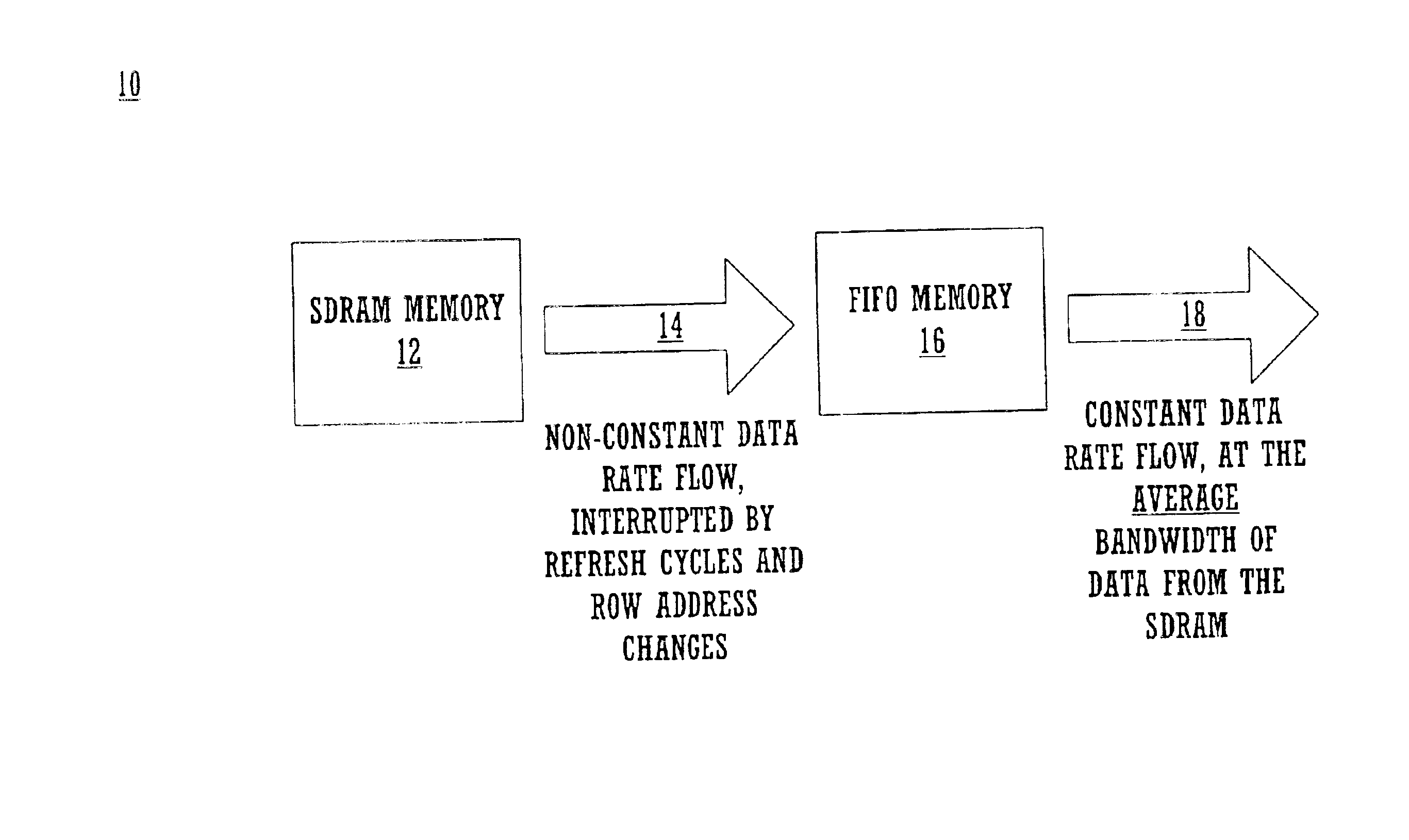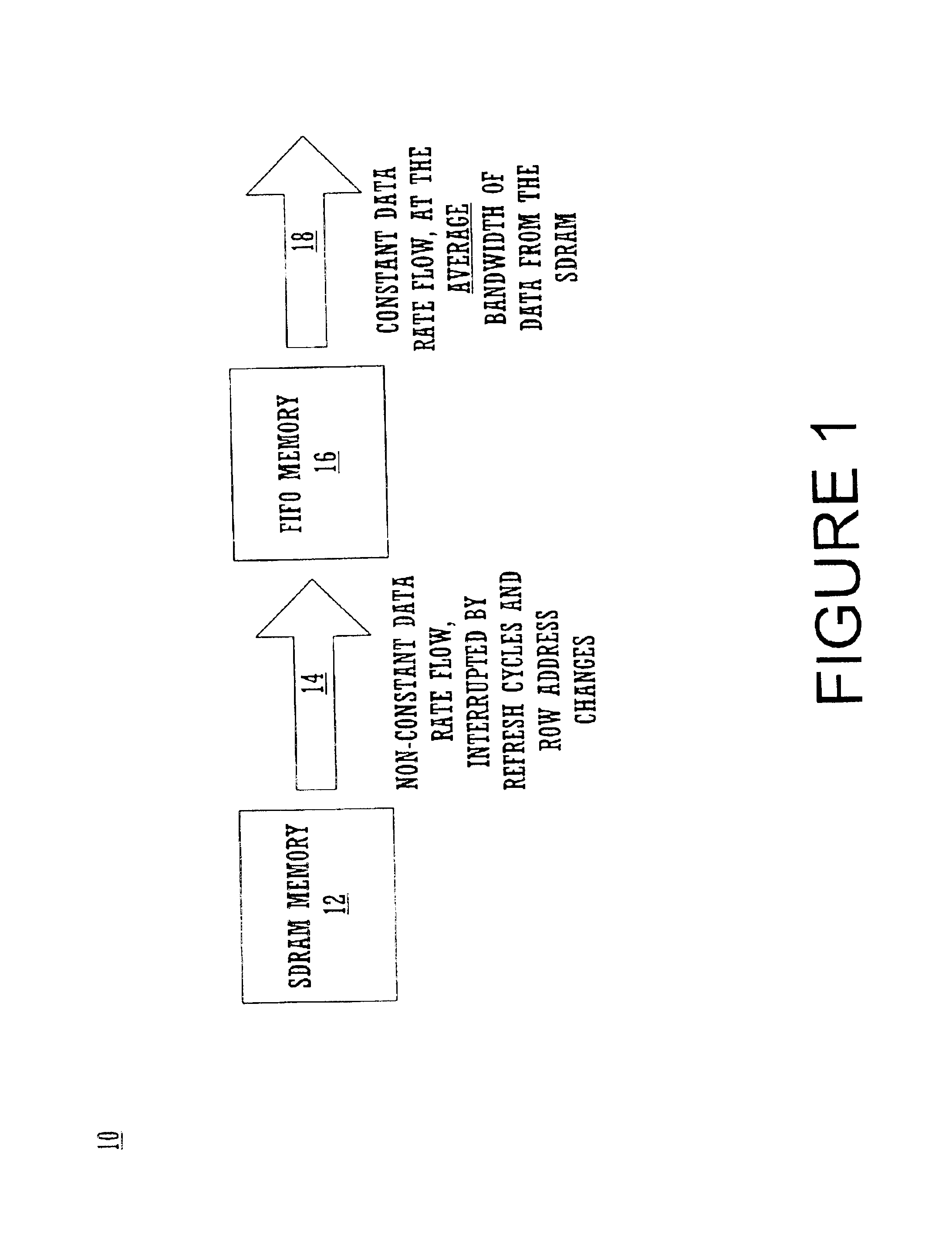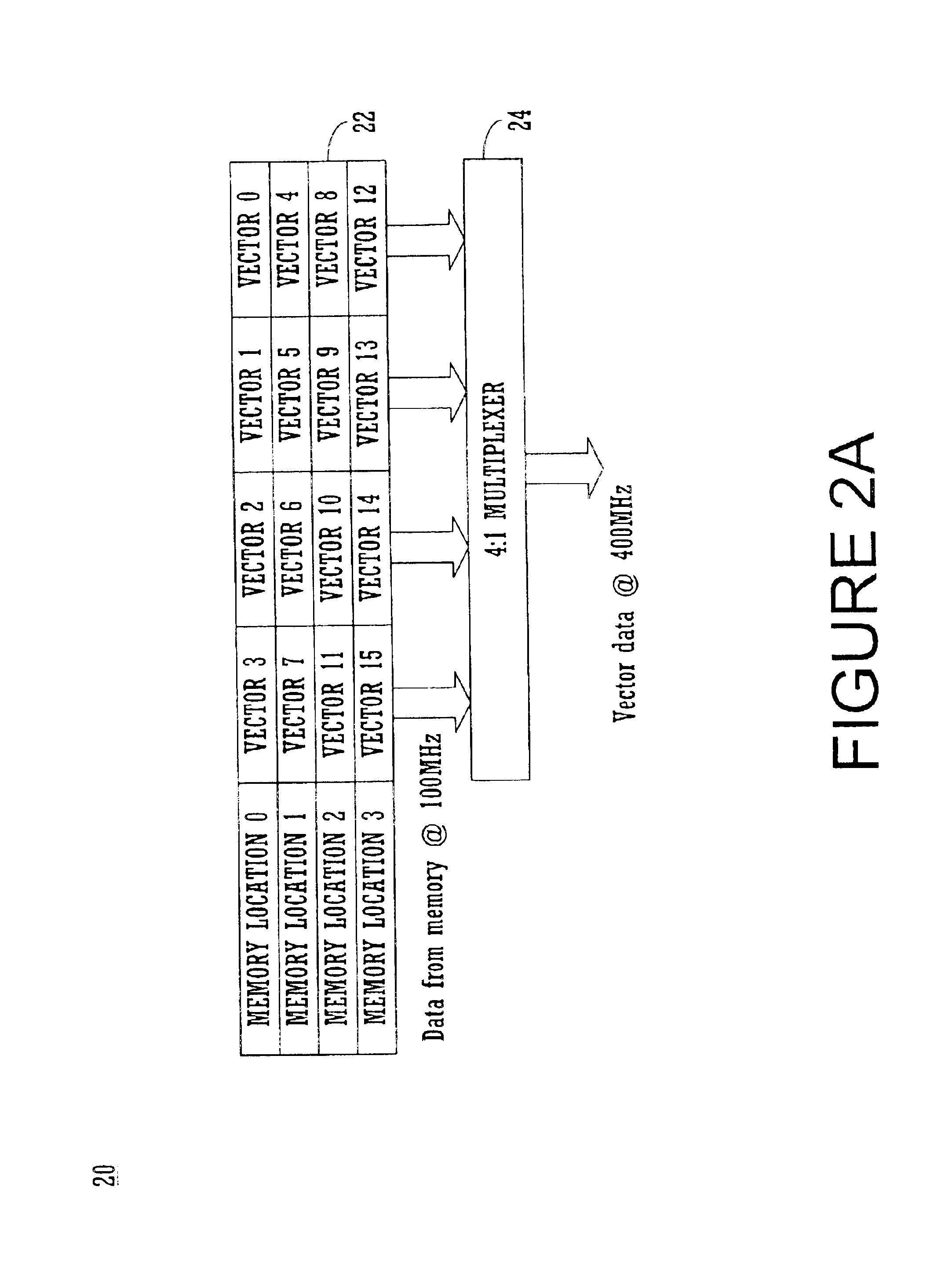Systems for providing zero latency, non-modulo looping and branching of test pattern data for automatic test equipment
a technology of automatic test equipment and test pattern data, applied in the field of integrated circuit testing, can solve the problems of increasing the size and complexity of integrated electronic systems, increasing the complexity of the methods and systems required to detect flaws within them, and increasing the complexity of the integrated electronic system. achieve the effect of efficient use of sram resources and high speed applications
- Summary
- Abstract
- Description
- Claims
- Application Information
AI Technical Summary
Benefits of technology
Problems solved by technology
Method used
Image
Examples
example operation
Upon the occurrence of a control word containing a “loop end” code, which also contains a “vector end vector” value (1−nV) and a “loop index” value, a loop may or may not be executed depending upon the state of a specified condition. The condition which could be the status of an externally generated event, or reaching a terminal count of a “loop counter” which was originally loaded on the first occurrence of the “loop begin” control word and subsequently decremented after each iteration of the loop.
If the specified condition is false, then the loop is not executed. If the condition is true, however, then the following events occur to execute the loop. FIG. 12A and FIG. 12B illustrate diagrams of the operation of the SRAM memory B 210b, the SRAM memory D 220b, the multiplexer B 430, the multiplexer C 420, the multiplexer D 415 and the multiplexer E 425 of circuit 200b of FIG. 8.
The multiplexer state machine 260b generates the correct selection codes for multiplexer B 430 and multiple...
PUM
 Login to View More
Login to View More Abstract
Description
Claims
Application Information
 Login to View More
Login to View More - R&D
- Intellectual Property
- Life Sciences
- Materials
- Tech Scout
- Unparalleled Data Quality
- Higher Quality Content
- 60% Fewer Hallucinations
Browse by: Latest US Patents, China's latest patents, Technical Efficacy Thesaurus, Application Domain, Technology Topic, Popular Technical Reports.
© 2025 PatSnap. All rights reserved.Legal|Privacy policy|Modern Slavery Act Transparency Statement|Sitemap|About US| Contact US: help@patsnap.com



